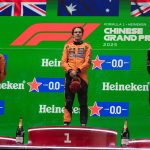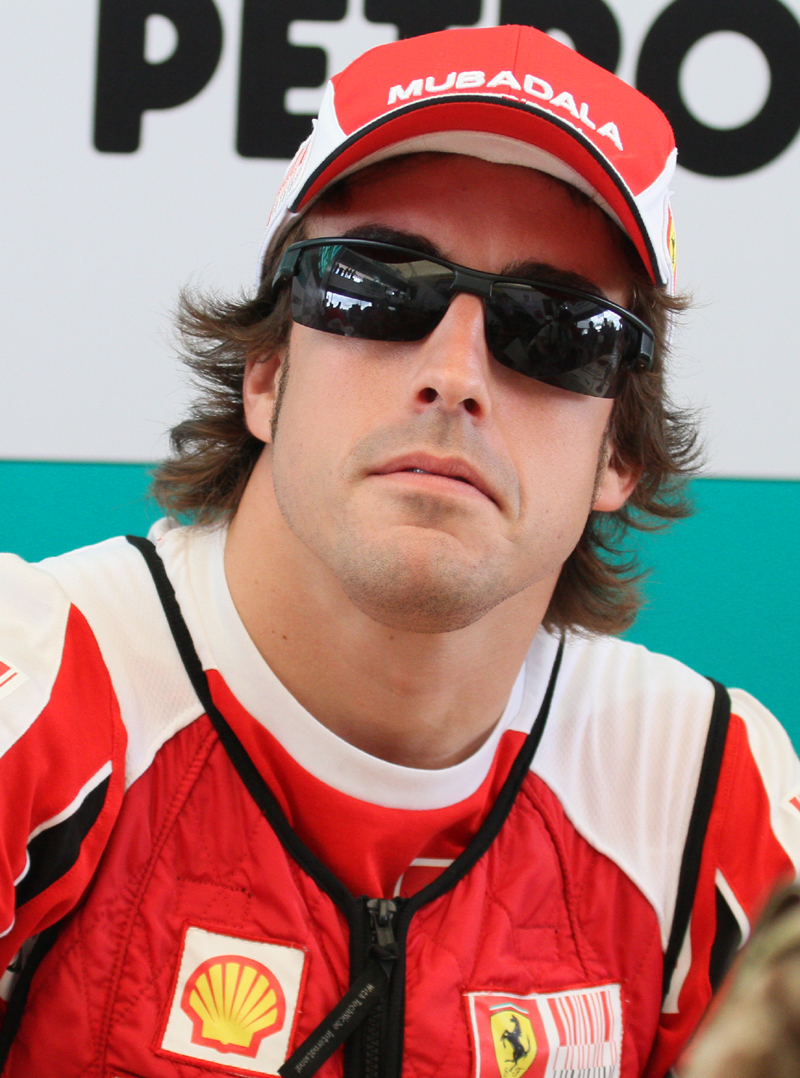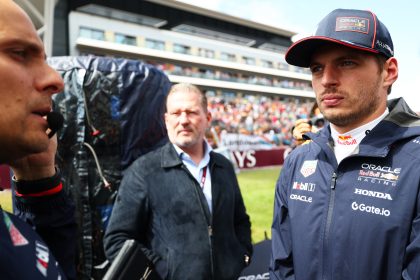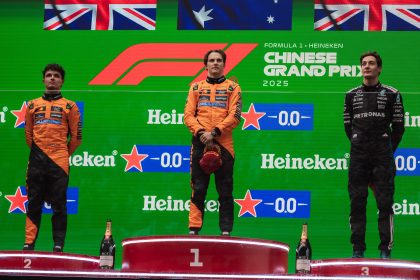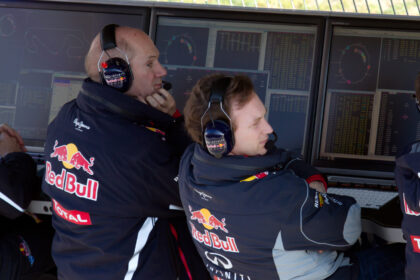There are days in Formula 1 when the championship is not won, but lost. July 24, 2005, at Hockenheim was one of those days—a day when the gods of speed, reliability, and fate conspired to hand Fernando Alonso the keys to history, while Kimi Räikkönen was left stranded, again, on the side of the road. If you want to understand how titles are forged not just by brilliance but by the cruel arithmetic of mechanical failure, pour yourself a strong coffee and settle in. This is the story of the 2005 German Grand Prix—a race that was less a contest and more a referendum on destiny.
- Hockenheim: Where Speed Meets Cruelty
- The Start: Kimi’s Command, Montoya’s Mountain
- The Middle Stint: The Iceman’s Curse
- Alonso’s Cruise, Button’s Redemption, Montoya’s Masterclass
- The Final Laps: The Shape of the Championship
- The Numbers: How the Title Was Won (and Lost)
- The Context: A Season of Speed and Sorrow
- The Human Element: Youth, Experience, and the Weight of Expectation
- The Legacy: What Hockenheim 2005 Taught Us
Hockenheim: Where Speed Meets Cruelty
The Hockenheimring, once a cathedral of slipstreaming and now a technical labyrinth, has always been a place where fortunes turn on a dime. On July 24, 2005, the circuit was packed with 100,000 fans, most of them hoping for a Schumacher miracle, but the real drama was unfolding at the sharp end of the grid. Kimi Räikkönen, the Iceman with the fastest car in the field, had just taken pole by a margin that would make even Senna nod in approval. Next to him, Jenson Button’s BAR-Honda, and lurking in third, the championship leader: Fernando Alonso, the 23-year-old Spaniard who was rewriting the record books with every lap.
The weather was classic German summer—cloudy, with a threat of drizzle that never quite materialized. The tension, however, was thick enough to cut with a carbon-fiber knife.
The Start: Kimi’s Command, Montoya’s Mountain
When the lights went out, Räikkönen launched cleanly, Button bogged down, and Alonso slotted into second. Michael Schumacher, ever the opportunist, muscled his Ferrari around the outside to snatch third. Behind them, chaos: Takuma Sato lost his front wing on Fisichella’s Renault, Mark Webber and Jarno Trulli bounced off each other, and Juan Pablo Montoya—starting dead last after a qualifying shunt—began a charge that would become the stuff of legend.
By the end of lap one, Räikkönen was already pulling away, Alonso was holding station, and Montoya was carving through the field like a man possessed. The McLaren was a rocket ship, and for once, Montoya’s elbows-out style was matched by a car that could take the punishment.
The Middle Stint: The Iceman’s Curse
For 35 laps, the script was clear: Räikkönen in command, Alonso waiting, Montoya climbing. The Finn’s lead stretched to over 10 seconds, and the only question was whether McLaren’s reliability would hold. If you were a betting man in 2005, you’d have known better than to wager on that.
On lap 35, the inevitable happened. Räikkönen’s McLaren suffered a hydraulic failure—his third major mechanical DNF of the season while leading. The car shuddered, slowed, and finally stopped, the Finn climbing out with the resigned look of a man who’s seen this film before. The German crowd, ever the connoisseurs of tragedy, gave him a sympathetic cheer. Alonso swept by, inheriting a lead he would never relinquish.
What can I say? It’s always terrible to retire, but whilst in the lead with a good gap to the number two car is even worse. This is the worst thing that could have happened as it looked like the race was in the bag… there is still a mathematical chance I could win the drivers’ championship but it’s getting difficult.
Kimi Räikkönen
Alonso’s Cruise, Button’s Redemption, Montoya’s Masterclass
With Räikkönen gone, Alonso was left with a 30-second cushion. The Renault was not the fastest car, but it was bulletproof, and Alonso was driving with the calm assurance of a man who knew the title was now his to lose. Behind him, Jenson Button was having his best race of the season, finally delivering on the promise that had been so elusive for BAR-Honda. He dispatched Schumacher with a clean move at the hairpin and looked set for second—until Montoya, on a contrarian strategy, leapfrogged both with a late pit stop.
Montoya’s drive from 20th to 2nd was a reminder that, on his day, he was as quick as anyone. But it was scant consolation for McLaren, who had once again seen their best-laid plans undone by gremlins.
It’s a bit frustrating because based on my qualifying pace and the fuel we had, I should have won the race. I made a mistake yesterday but I brought it back to the podium from 20 to second so it’s not that bad.
Juan Pablo Montoya
The Final Laps: The Shape of the Championship
As the laps wound down, Alonso managed his pace, Button and Montoya settled into their podium places, and Giancarlo Fisichella snatched fourth from Michael Schumacher on the penultimate lap. The Constructors’ battle tilted further in Renault’s favor, and the Drivers’ Championship, once a knife fight, now looked like a coronation march for Alonso.
He (Raikkonen) has the best car and we have to be careful. There are still 70 points to race but if we keep finishing races, it will be difficult for him.
Fernando Alonso
The Numbers: How the Title Was Won (and Lost)
Let’s talk numbers, because in Formula 1, numbers never lie—unless you’re reading a press release.
2005 German Grand Prix – Final Standings
| Position | Driver | Team | Time/Gap |
|---|---|---|---|
| 1 | Fernando Alonso | Renault | 1:26:28.599 |
| 2 | Juan Pablo Montoya | McLaren-Mercedes | +22.569 |
| 3 | Jenson Button | BAR-Honda | +24.422 |
| 4 | Giancarlo Fisichella | Renault | +50.587 |
| 5 | Michael Schumacher | Ferrari | +51.690 |
| 6 | Ralf Schumacher | Toyota | +52.242 |
| 7 | David Coulthard | Red Bull | +52.700 |
| 8 | Felipe Massa | Sauber | +56.570 |
After 12 rounds, Alonso had 87 points, Räikkönen 61—a 26-point gap with seven races to go. In a season where a win was worth 10 points, that was a mountain, not a hill.
The Context: A Season of Speed and Sorrow
To understand the emotional weight of Hockenheim 2005, you have to look at the season as a whole. McLaren had the fastest car, but their reliability was a running joke—unless you were Räikkönen, in which case it was a recurring nightmare. The Finn had already lost wins at the Nürburgring (suspension failure on the last lap) and Magny-Cours (hydraulics), and now Hockenheim joined the list.
Alonso, by contrast, was the model of consistency: six wins, ten podiums in twelve races, and only one retirement. He was about to become the youngest world champion in history, and he was doing it not with fireworks, but with relentless, almost clinical efficiency.
If you want to relive the heartbreak and heroics, there’s a fantastic race review here: RaceFans: German Grand Prix 2005 Review
The Human Element: Youth, Experience, and the Weight of Expectation
Alonso turned 24 the week after Hockenheim. He was on the cusp of breaking Emerson Fittipaldi’s record as the youngest world champion—a record that had stood since 1972. The Spanish press was in a frenzy, Renault was already planning the party, and the rest of the paddock was left to wonder how a driver so young could be so unflappable.
Meanwhile, Räikkönen, still only 25, was learning the hardest lesson in motorsport: speed is nothing without reliability. His body language after the race said it all—shoulders slumped, eyes fixed on the middle distance, the look of a man who knows he’s running out of chances.
For a taste of the atmosphere, check out this image of Alonso celebrating:
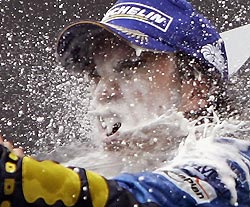
The Legacy: What Hockenheim 2005 Taught Us
Looking back from the vantage point of 2025, the 2005 German Grand Prix stands as a case study in how championships are won and lost. Alonso’s victory was not just a triumph of talent, but of preparation, discipline, and—let’s be honest—luck. Räikkönen’s defeat was a reminder that in Formula 1, the fastest car is only as good as the weakest bolt.
The echoes of that day still reverberate. Every time a title contender suffers a mechanical DNF, every time a young driver strings together a run of podiums, Hockenheim 2005 is there, lurking in the background. It’s a lesson for engineers, strategists, and fans alike: in this sport, you need speed, but you also need the racing gods on your side.
For those who want to see the race in motion, here’s a classic review:
YouTube: 2005 German Grand Prix Highlights





